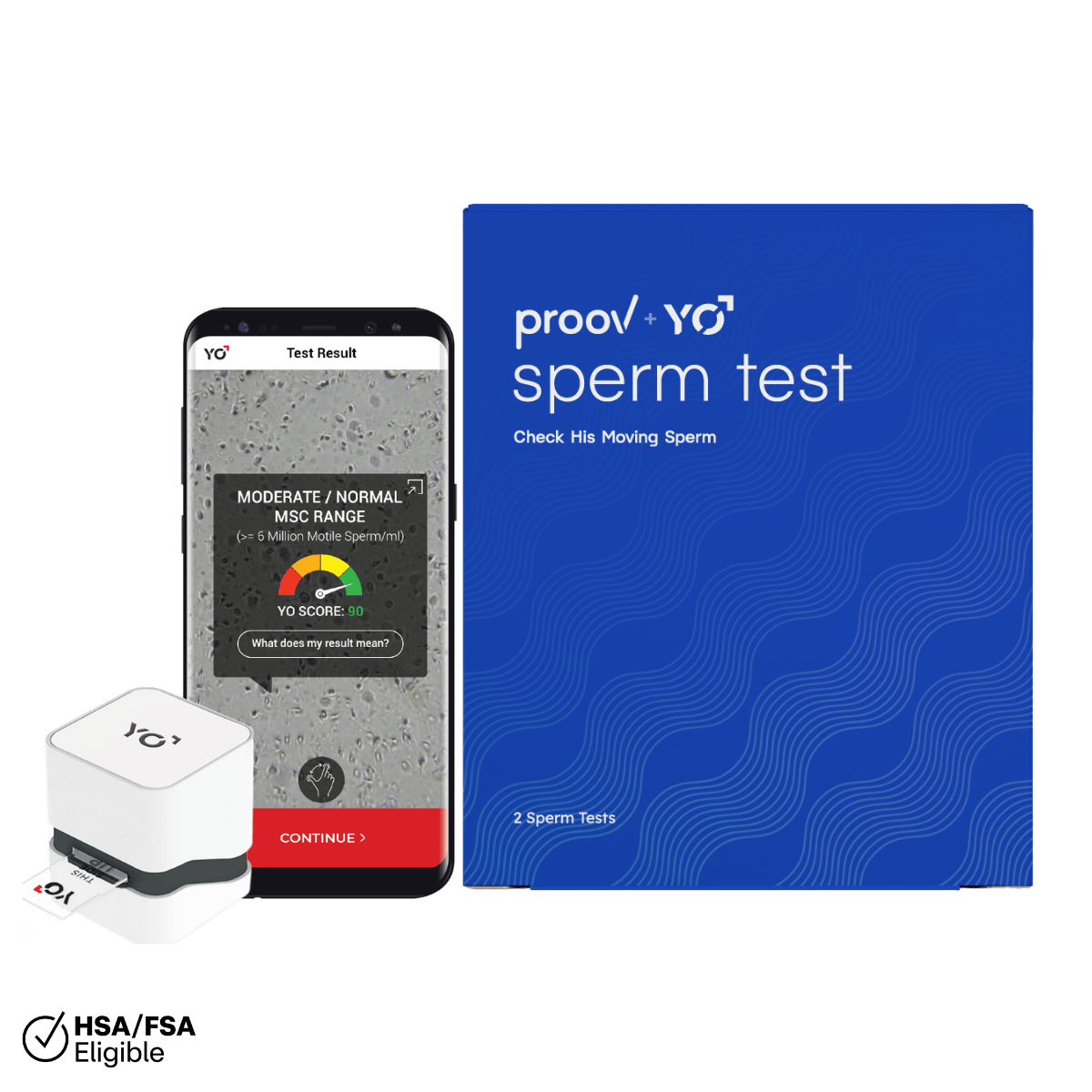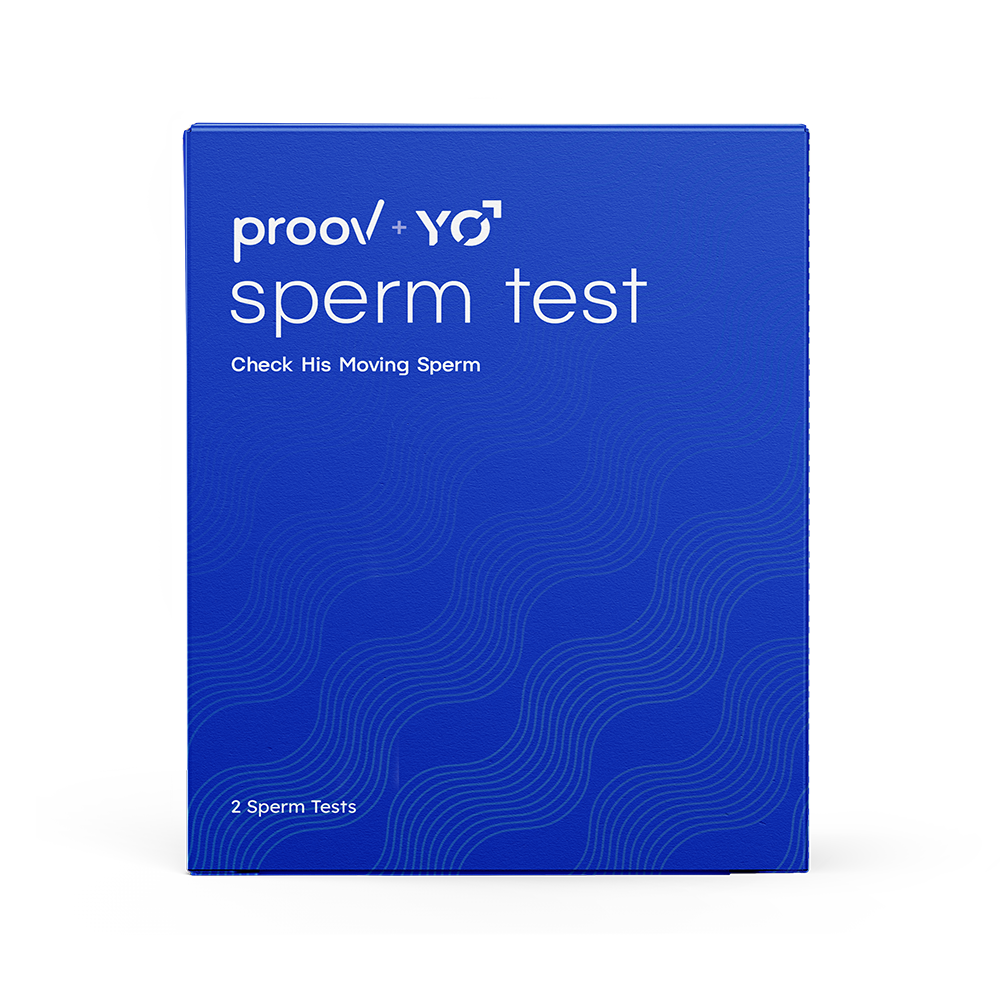Written by: Dr. Amy Beckley, PhD, Founder and Inventor of the Proov test.
Spotting is very light bleeding that occurs before, after, or completely separate from a period. It is different from a menstrual period in that menstruation has flow that can be described as light, moderate, heavy or even very heavy, but spotting doesn't.
Is it normal to experience spotting after periods?
Two or more consecutive cycles that have more than one day of spotting before or after menstrual flow deserves investigation. Track your cycle, particularly the bleeding intensity, color, frequency and any pain or cramping you experience.
This will help you be certain that your spotting is occurring in two or more consecutive cycles and could be a symptom of something being awry with your hormones or reproductive organs.
What are potential causes of spotting after a period?
First, let’s make sure we have a good understanding of what menstrual flow is. Menstruation, a.k.a. a period, is the shedding of the lining of the uterus that occurs about two weeks after ovulation because there was no pregnancy. In other words, unless you know you ovulated in the previous cycle, the bleeding you’re experiencing may not be a menstrual period.
It’s very important to know if you ovulated in the previous cycle because it qualifies your bleeding as true menstruation. This is part of the utility of Proov’s at-home testing for PdG, a metabolite of progesterone which is a hormone that rises after ovulation. It’s a great way to confirm ovulation and true menstruation.
Now let’s talk about spotting after true menstruation. There are many possible causes. Here are a few:
Low Progesterone

Spotting, particularly very light, brown bleeding, on the tail end of your menstrual period is one symptom of something called a luteal phase deficiency.
In a nutshell, the luteal phase refers to the latter part of your cycle after ovulation before menstruation. In a luteal phase deficiency situation, this phase is shorter than expected because ovulation did not occur as expected.
With a suboptimal ovulation, the corpus luteum, a mini organ that forms from the follicle that released the egg at ovulation, is also suboptimal. A strong corpus luteum is the result of a strong ovulation and makes sufficient progesterone to stabilize the lining of the uterus long enough for implantation should conception occur in the luteal phase of your cycle. A luteal phase deficiency means your corpus luteum is not making enough progesterone likely because ovulation was not optimal.
Besides tail end brown spotting, other symptoms of a luteal phase deficiency or low progesterone include: pre-menstrual spotting, PMS, poor temperature rise after ovulation (if you are tracking basal body temperature), excessive or poor quality cervical mucus, and even amenorrhea (no menstruation).
You can learn more about luteal phase deficiency and low progesterone here.
Birth Control
Did you forget to take your birth control pill, or change the type of pill you are on? A change in your birth control can cause spotting that is due to fluctuating estrogen levels. Estrogen talks to the lining of the uterus. A drop in estrogen can cause very light bleeding.
In addition to the pill, contraceptive implants, injections like Depoprovera, or an intrauterine device (IUD) can cause spotting due to impact on estrogen levels and, as in the case of the IUD, due to an actual physical device that is disrupting the lining of the uterus.
Sexually Transmitted Infections
Gonorrhea and chlamydia are known to cause spotting. If you suspect these infections and also have other symptoms like vaginal discharge, pain or a burning sensation when peeing, or pain in the lower abdomen or groin area, please consult a doctor.
Cervicitis (inflammation of the cervix) often occurs with gonorrhea and chlamydia and is another possible cause for usual bleeding such as spotting after menstrual flow.
Polyps or Fibroids

Polyps and fibroids are abnormal growth in and around the uterus. Both conditions may cause abnormal bleeding including spotting at the end of menstrual flow. You need to have an ultrasound to determine if this is the cause of your spotting.
Polyps vary in size and can be almost unnoticeable on an ultrasound, or they can grow to be as big as a golf ball. Generally speaking, polyps are non-cancerous although about 2% of polyps are caused by endometrial cancer. They can also block sperm from getting to the egg, or impede implantation. It’s important to know if you have a polyp and treatment is usually a minor surgery called a polypectomy.
Fibroids are smooth muscle tumors that can be in the uterus or around it. Fibroids that develop in the uterine lining (submucosal fibroids) can cause abnormal uterine bleeding like spotting, irregular cycle length, or unusually heavy flow. Other types of fibroids are completely asymptomatic. In any case, fibroids can be treated medically or surgically once discovered.
Ectopic Pregnancy or Miscarriage
Spotting at the end of what you thought was your menstrual flow may not be related to menstruation at all. It’s possible that you conceived but the pregnancy is not stable causing bleeding that may resemble a period with some unusual symptoms like tail end spotting, pelvic pain, nausea, breast tenderness or pain on defecation.
If you think you might be pregnant and miscarrying, please see a doctor as soon as possible. Even more seriously, if you think you have a tubal or ectopic pregnancy, seek medical attention immediately. Learn more about these ectopic pregnancy and miscarriage here.
Additional Causes Recognized by OB/GYNs Trained in Fertility Awareness

Specific methods of cycle charting or fertility awareness help women hone in on exactly when, how much, and what color their end of flow spotting is. These specifics can be brought to the attention of doctors trained to use these types of cycle charts to guide their diagnostic assessments. For example, a few evidence-based fertility awareness-based methods recognize tail end brown bleeding as clinically significant warranting investigation of the following additional causes:
- Hormonal abnormalities including low progesterone or thyroid imbalances
- Low endorphin levels
- Food allergies or intolerances
- Low-grade infection
- Adrenal fatigue
If you think you are experiencing hormonal imbalance spotting before period, we always recommend at-home hormone testing!













